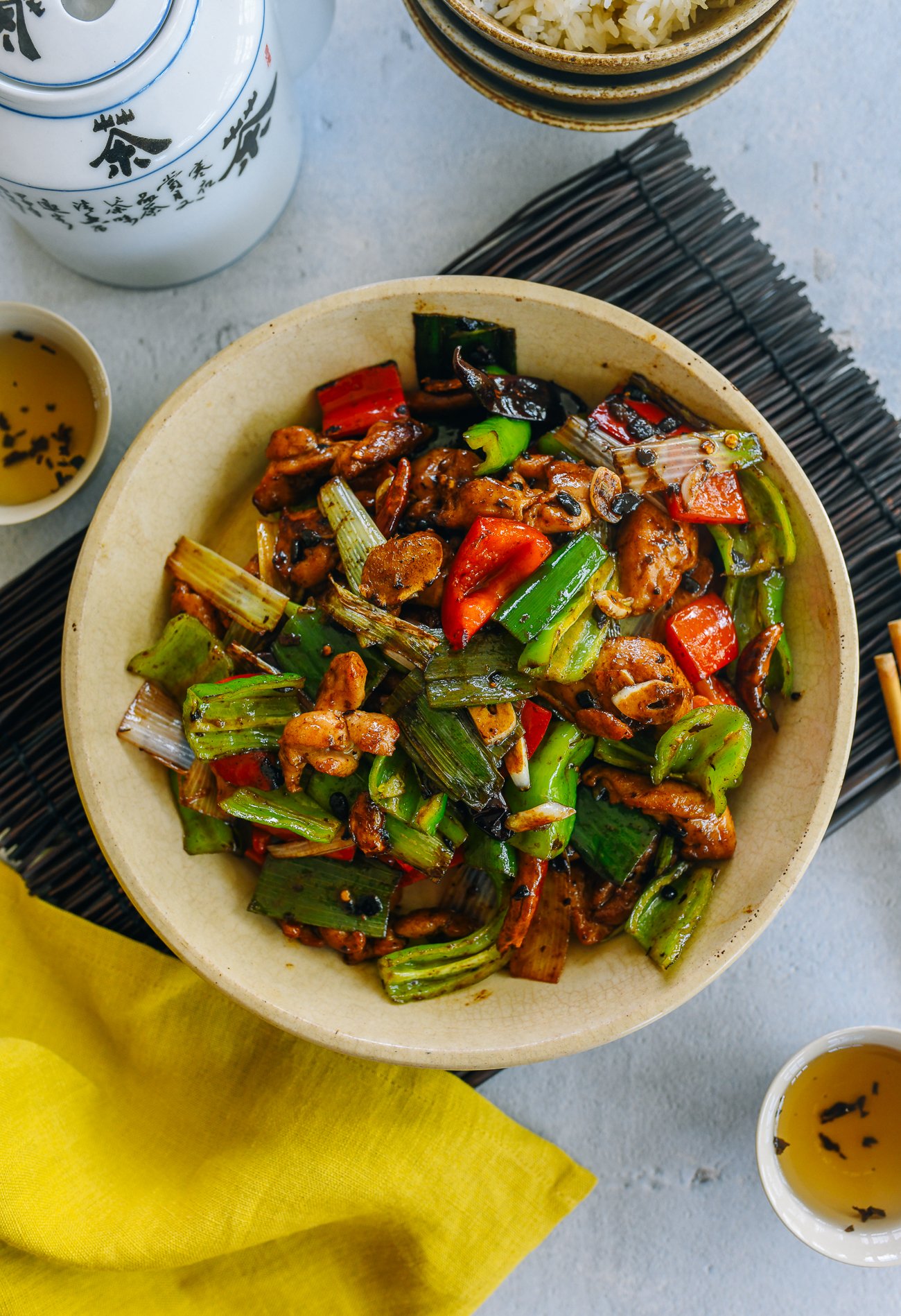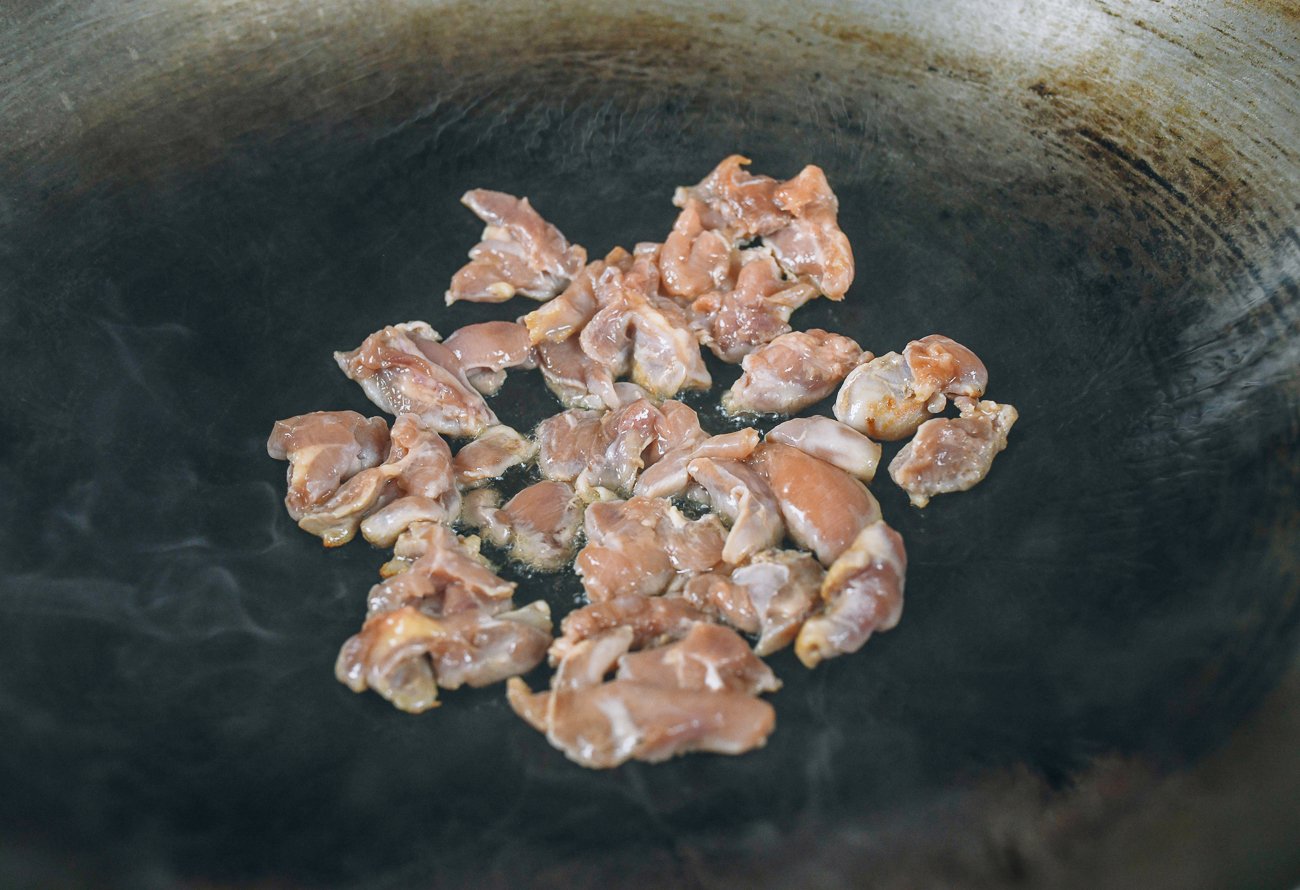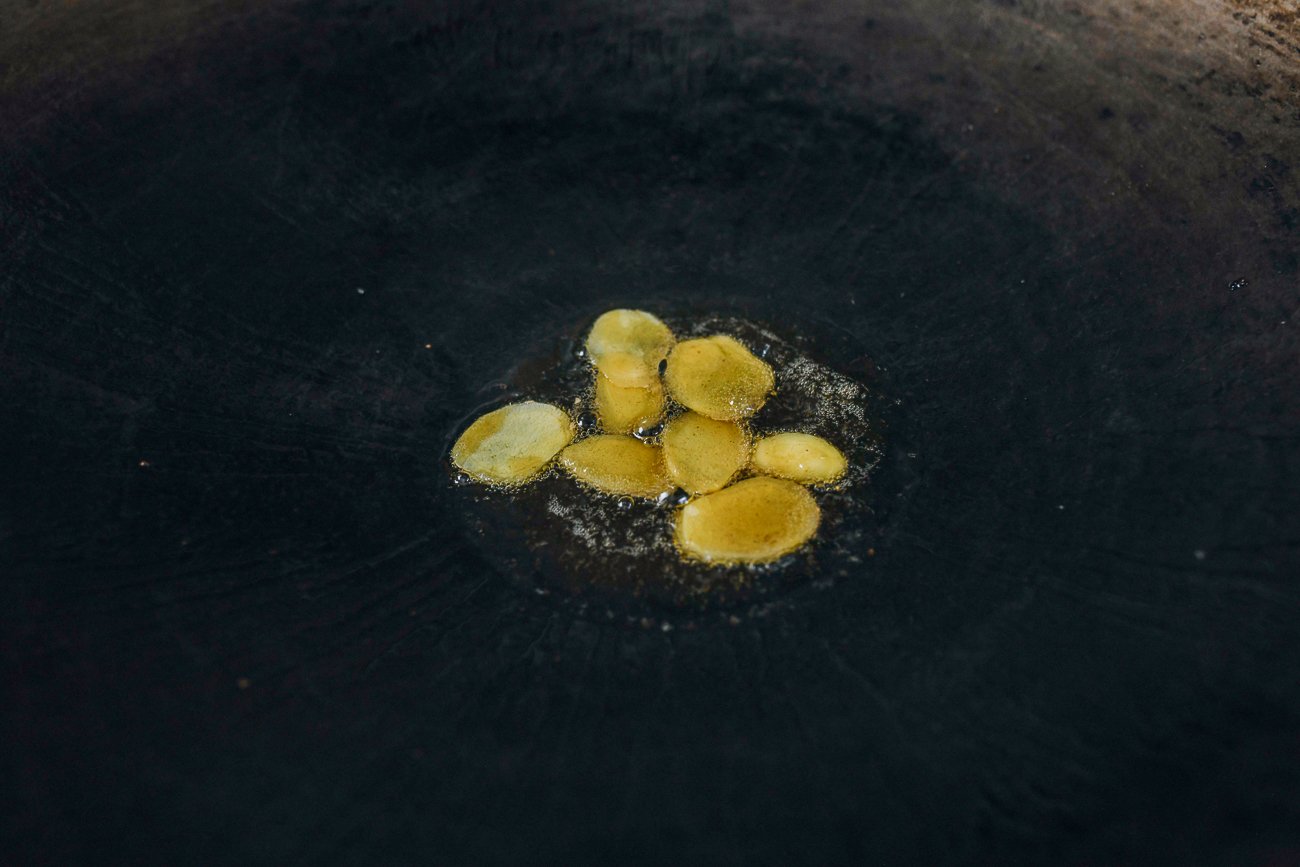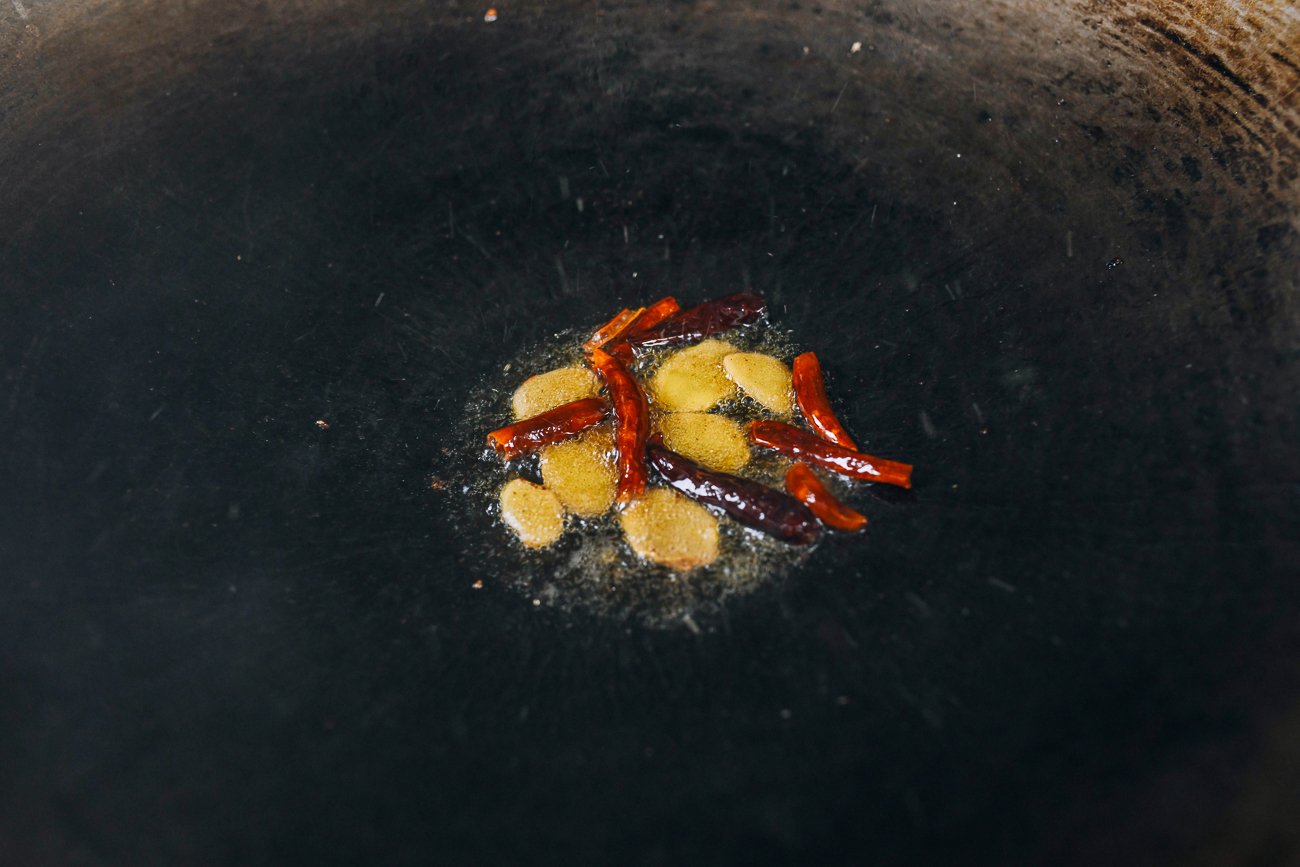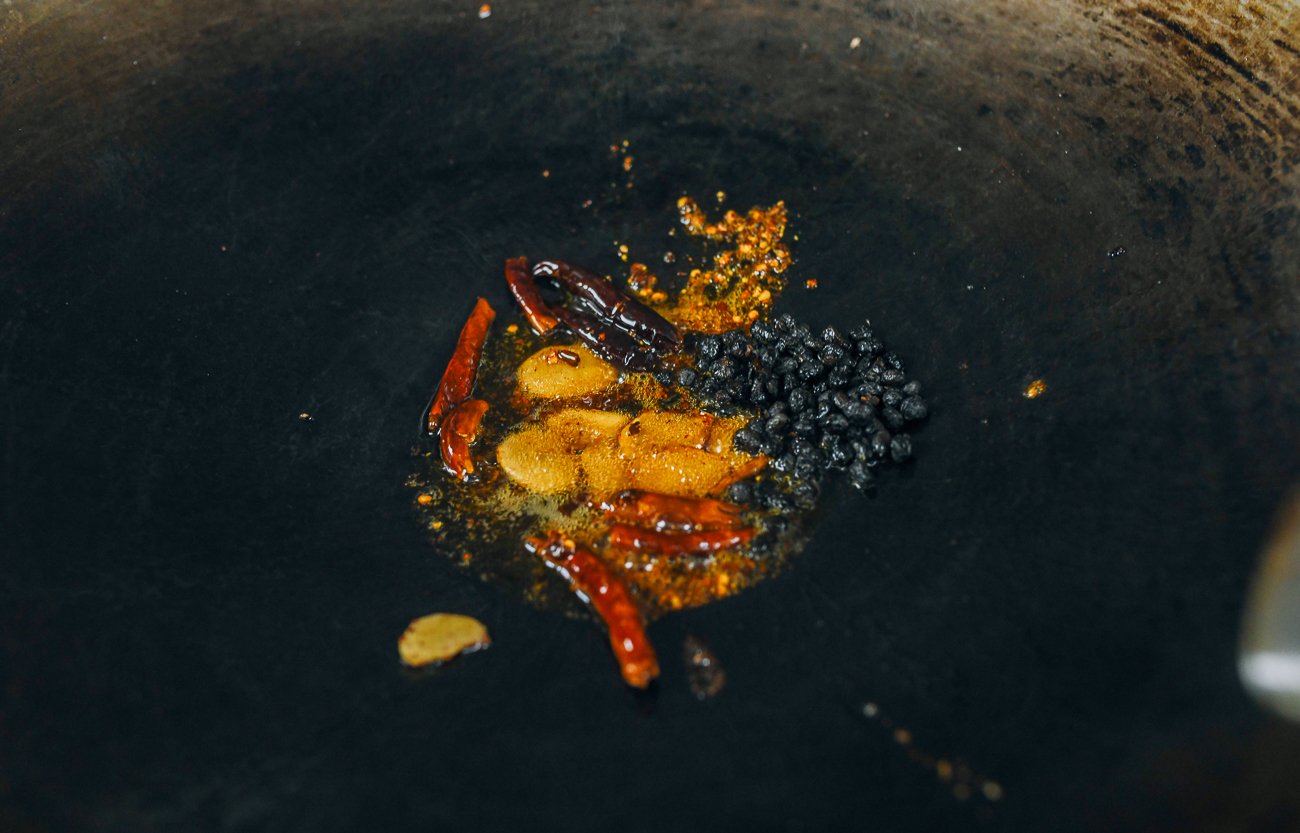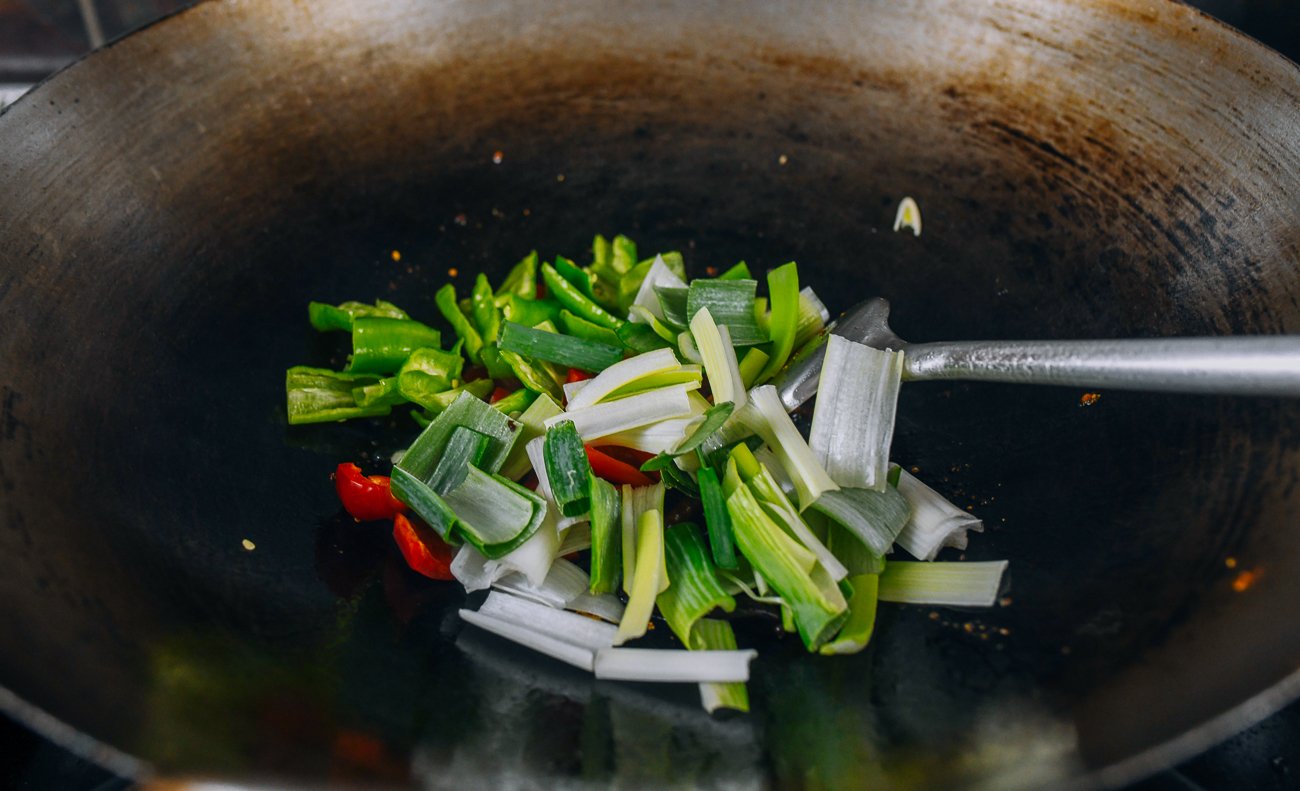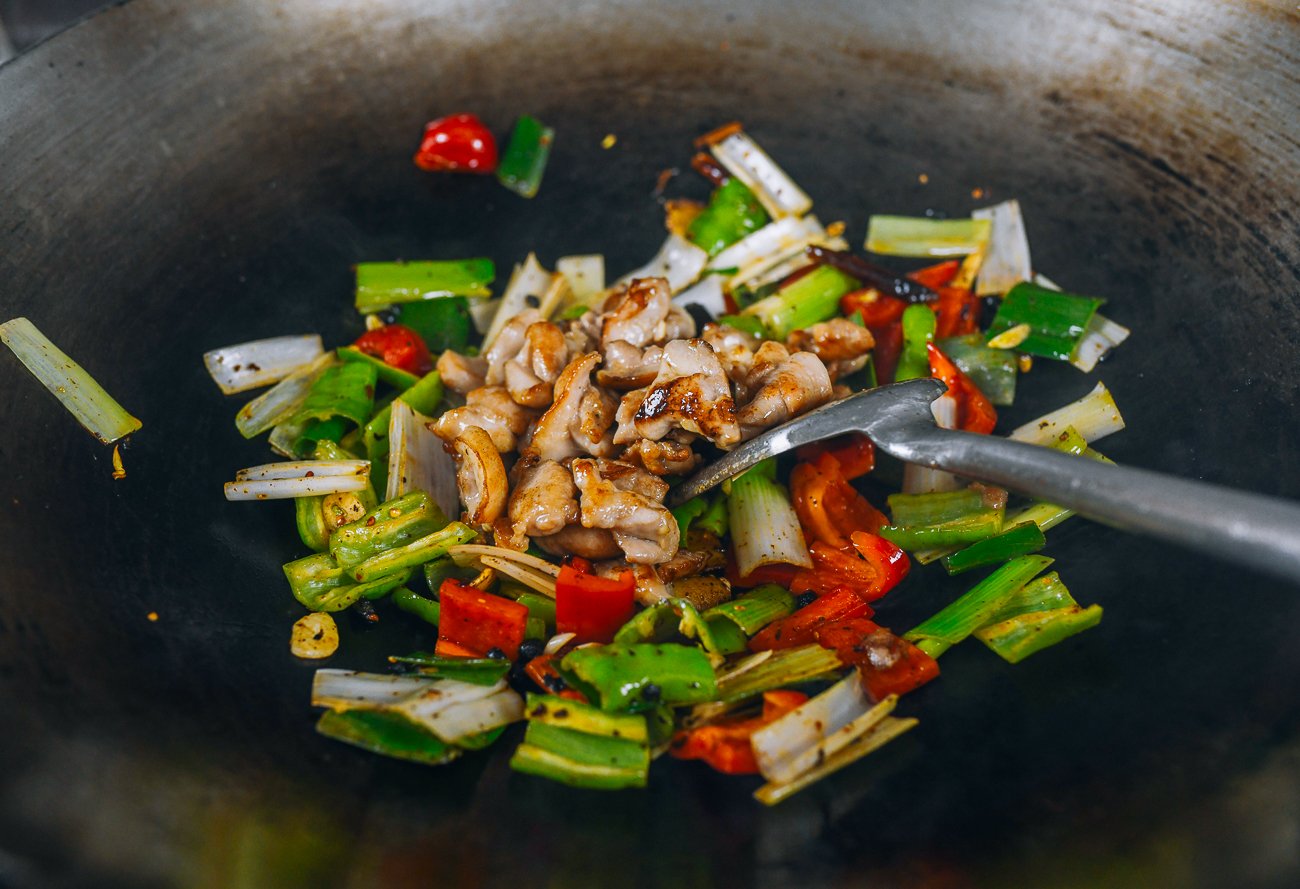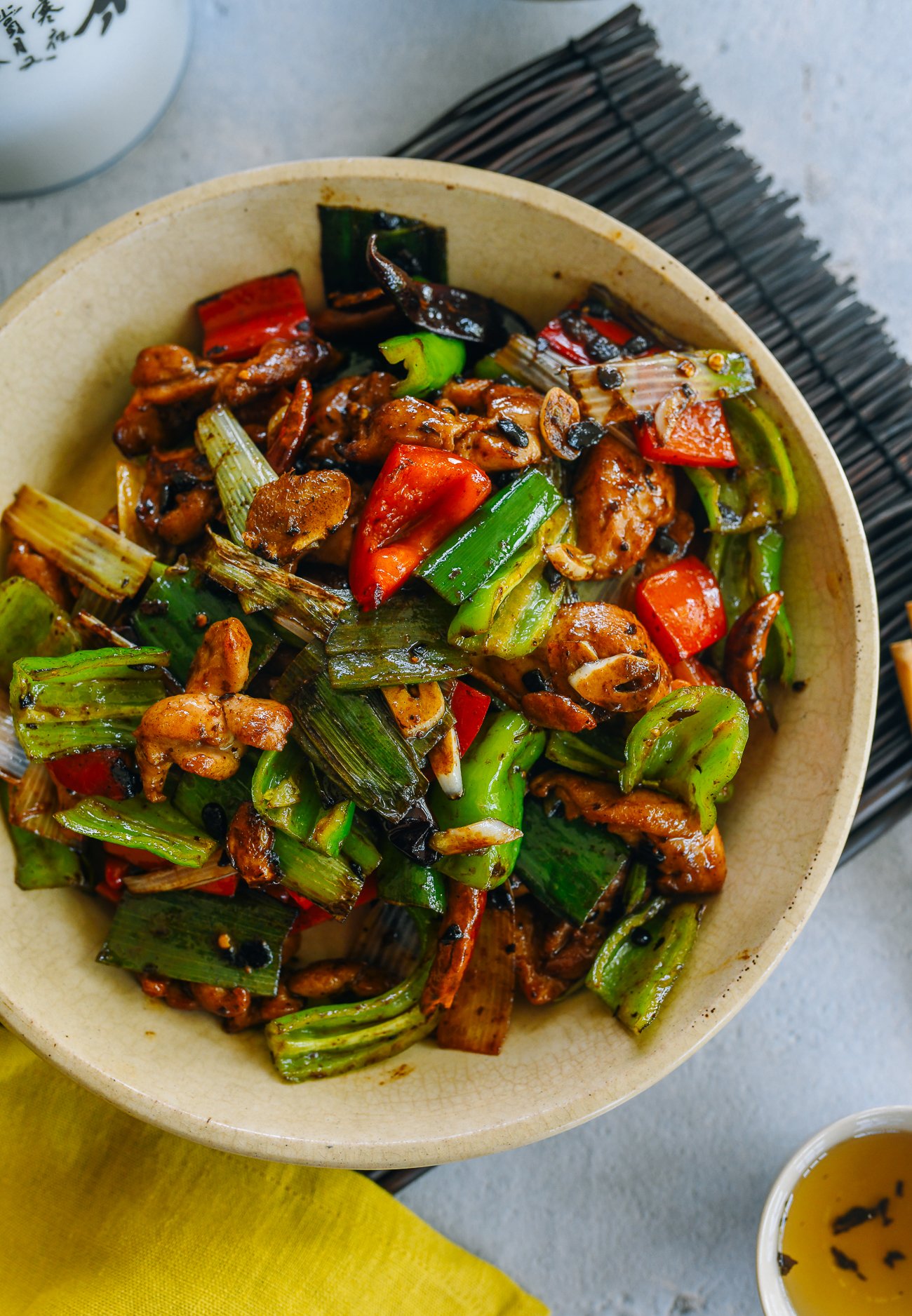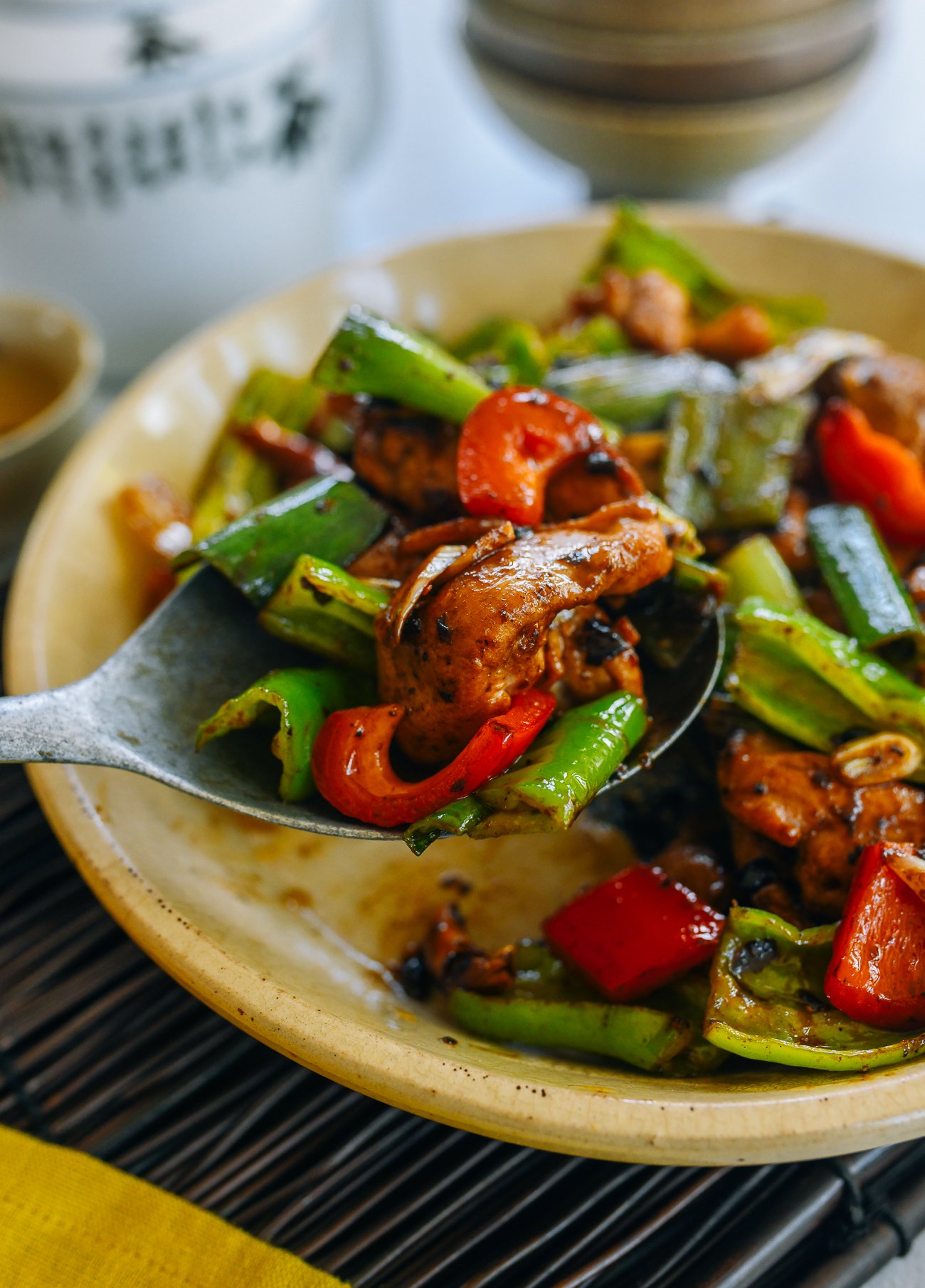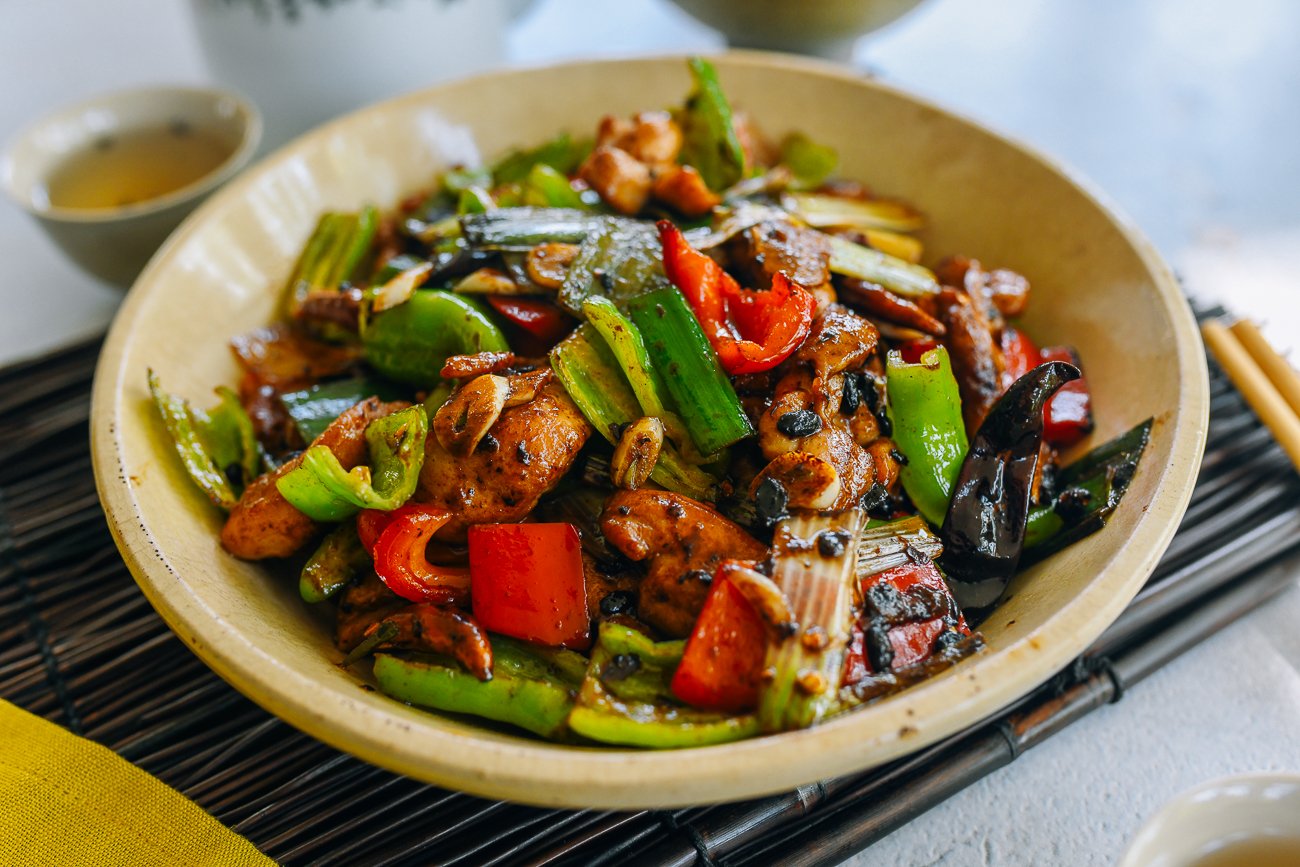This Hunan Chicken is Not a Chinese American Recipe…
Like many Chinese recipes that have made the jump from China to America, the question, “What is it?” will vary, depending on who you ask. Chances are, if you’ve heard of Hunan Chicken stateside, you’ve eaten an Americanized version. Vegetables like broccoli and celery made their way into the dish, and it tastes a bit too similar to other “brown sauce” stir-fries, like Chicken with Broccoli or Chicken with Garlic Sauce. While those dishes are enjoyable, they’re pretty different from the flavors of Hunan province. Instead of trying to hit a sort of tough-to-define Chinese American dish, we decided to make a Hunan Chicken stir-fry that references some of the more recognizable flavors and ingredients from the actual province, which lies to the east of Sichuan and north of Guangdong, in southern China.
What Does Hunan Cooking Taste Like?
Over the years, we’ve enjoyed eating out at a traditional Hunan restaurant located in Bridgewater, NJ, called Fortune Cookies. We’re letting the cat out of the bag, so you can go there and support them, because it’s a favorite place of ours, and we want them to stay there! It’s run by a family who grows, sources, and makes from scratch lots of hard-to-find ingredients. From eating at their restaurant, we’ve learned that there are some defining ingredients to Hunan cooking, like fermented black beans, leeks or scallions, vinegar, fresh spicy peppers, dried peppers, fresh garlic (read more on the virtues of adding garlic late in a dish to preserve its fresh flavor), and oil. Hunan cooking also uses lots of fresh ginger, which I have grown to love! Another defining feature of Hunan cooking worth calling out is the sour note of many dishes. The cuisine sets itself apart by its use of vinegar and fermented flavors. One of our favorite dishes is Pickled Long Beans with Pork! There are also some fascinating smoked meat ingredients, including pork belly and beef. Hunan cooking uses these signature ingredients to achieve spicy or strongly-flavored stir-fries. Happily, many of these ingredients mix perfectly with chicken in a hot wok!
The Difference Between Hunan and Szechuan (Sichuan) Cooking
Hunan and Sichuan cuisine both use lots of oil and are both spicy, so they can be easy to confuse.
In my mind, the key difference is that food from Sichuan often has those Sichuan peppercorns that create a numbing sensation in your mouth, while Hunan dishes are more purely spicy from chilies. It’s also well-known among Chinese folks that Hunan dishes are actually hotter and spicier than those from Sichuan, which might come as a surprise to Americans who know Sichuan food as one of the spiciest cuisines out there!
Prep Work for Hunan Chicken
We recommend using boneless chicken thighs for this dish, since dark meat makes for tastier, juicier Hunan Chicken. The higher fat content is the key difference between dark and white meat. But don’t sweat if you want to use chicken breast instead. Before slicing your chicken, put it into the freezer for about 15 minutes to make slicing a breeze.
Choosing the Right Peppers
Which peppers you use in this dish ultimately comes down to personal preference. We found that a mix of spicy and sweet peppers worked well for this recipe, so we used red bell peppers and long hot green peppers (sometimes called cowhorn peppers or Italian sweet peppers).
Kung Pao Chicken Chongqing Chicken Three Pepper Chicken
Other Hunan Dishes We Love:
Hunan Beef Hunan Pork and Tofu Stir fry Hunan Style Whole Steamed Fish Hunan Style Eggplant Fluffy Chinese Scrambled Eggs with Salted Chilies (Duo Jiao)
They vary in spice level, with some specimens being really hot and others being pretty mild, but you won’t really know until you try the dish! If you can’t find long hots, you can also use Anaheim chilies, jalapeños or poblanos. Adjust what you use according to your spice tolerance. Another lever you have is de-seeding the peppers and removing the interior veins. This makes spicy peppers milder. By the same token, leaving them intact will make the dish spicier. Remember that you also have the red dried chili peppers and the chili oil in this dish, which adds additional heat. Be careful not to break open the dried red peppers (to release the seeds) unless you really want a super spicy Hunan Chicken!
Video: Watch Us Make It!
Hunan Chicken Recipe Instructions
Add the sliced chicken to a medium bowl, along with the water, cornstarch, and oyster sauce. Massage with your hands until all of the liquid is absorbed. Set aside for 30 minutes to marinate. Stir 2 tablespoons of hot water with the granulated sugar until the sugar dissolves. Add the light soy sauce, rice vinegar, and white pepper. This is your sauce mixture. Mix until well-combined, and set aside. Read More Heat your wok over high heat until it’s just starting to smoke. Spread the oil around the wok, and add the chicken in one layer (you can do this in a couple batches, depending on the size of your wok). Sear on both sides until golden brown. Adjust your heat as needed, but you’ll know you have it right when the aroma from your wok smells a bit like fried chicken! Remove the chicken from the wok and set aside. After searing the chicken, reduce the heat to low, and leave 2 tablespoons of the oil in the wok. Set aside any excess in a heatproof bowl. You can use this oil to stir-fry another dish, so long as you are using it right away. Add the ginger, and let it fry for 30-60 seconds, until lightly browned on the edges. Toss in the dried red chili peppers, cook for another 10 seconds. Then add the fermented black beans and chili oil. Next, add the leeks and peppers, and continue to stir-fry for another 30 seconds to 1 minute, until the leeks start to wilt and you get a nice sear on the peppers. Next, pour the Shaoxing wine around the perimeter of the wok, and add the garlic. Stir-fry for another 30 to 60 seconds on high heat, or until the peppers are softened but still crisp tender. Add the seared chicken along with any juices back to the wok, along with your prepared sauce. Maintaining high heat, stir-fry everything together for another minute, until the sauce reduces and clings to the chicken and vegetables. Serve your spicy Hunan Chicken with steamed rice, and enjoy!
